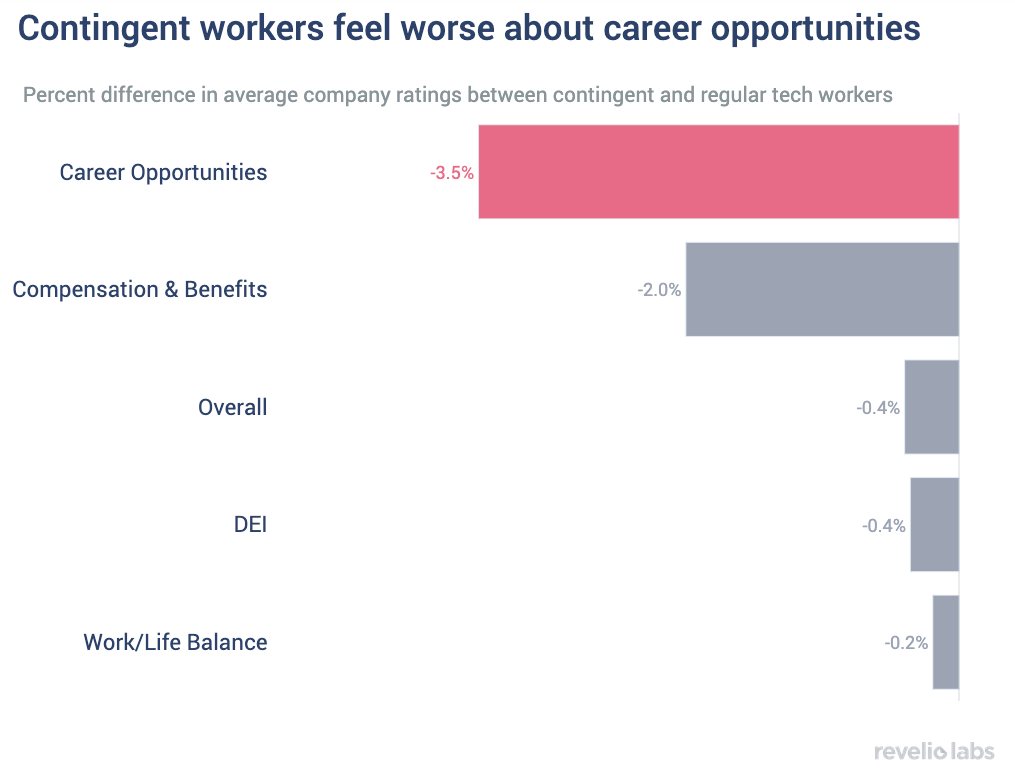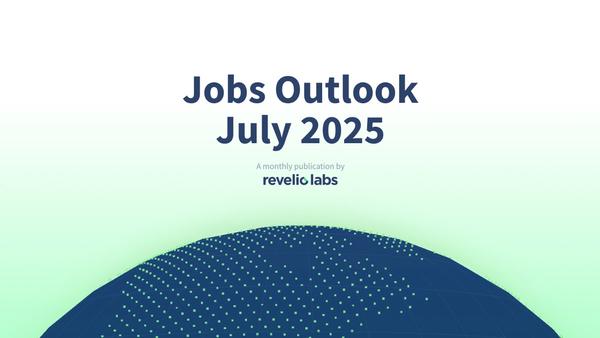The Employees Tech Companies Don’t Tell You About
In the tech world, contingent workers lose out

Contingent workers earn 10% less in base salary than regular employees.
Occupational differences between contingent and regular employees explain 39% of the contingent worker salary gap.
Contingent workers also express lower satisfaction with their employers, particularly in terms of career opportunities and compensation and benefits.
The contingent workforce refers to workers in contractor, temporary, freelance, or gig positions rather than traditional full-time employees. While contingent workers make substantial contributions to the economy, they face distinctive challenges including unequal pay, job insecurity, and restricted access to benefits. In a collaboration between Revelio Labs and Trusaic, a workplace equity technology company, we highlight one of the challenges facing contingent workers–the salary gap. We compare contingent and regular workers in science and engineering positions within tech companies to shed light on the key drivers behind the contingent salary disparity.
Our labor market analytics reveal that the average base salary of US contingent workers in science and engineering roles in the technology industry is $102,650, which is 10% lower than regular employees, who earn on average $114,514.

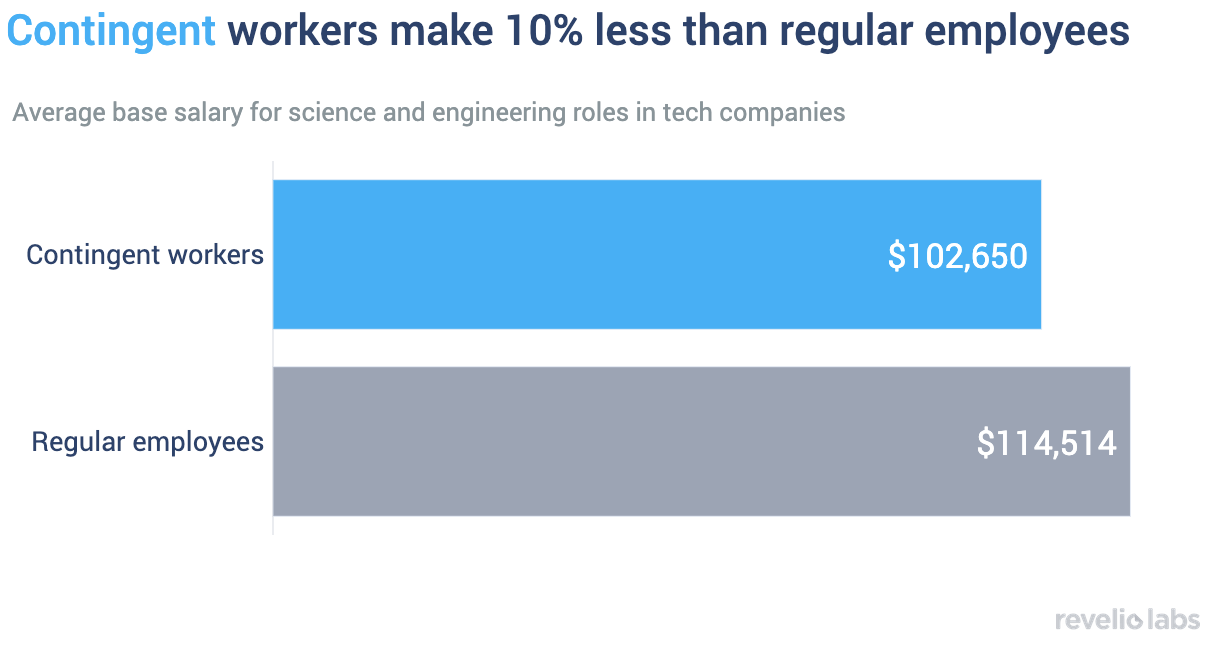
To understand what drives this salary difference, we examine the composition of contingent and regular workers. We find that contingent workers are more likely to work in technician and tech support roles, but less likely to work as software engineers. Given that software engineers typically earn higher salaries than technicians, this disparity in occupational composition can indeed contribute to pay disparities.
Sign up for our newsletter
Our weekly data driven newsletter provides in-depth analysis of workforce trends and news, delivered straight to your inbox!

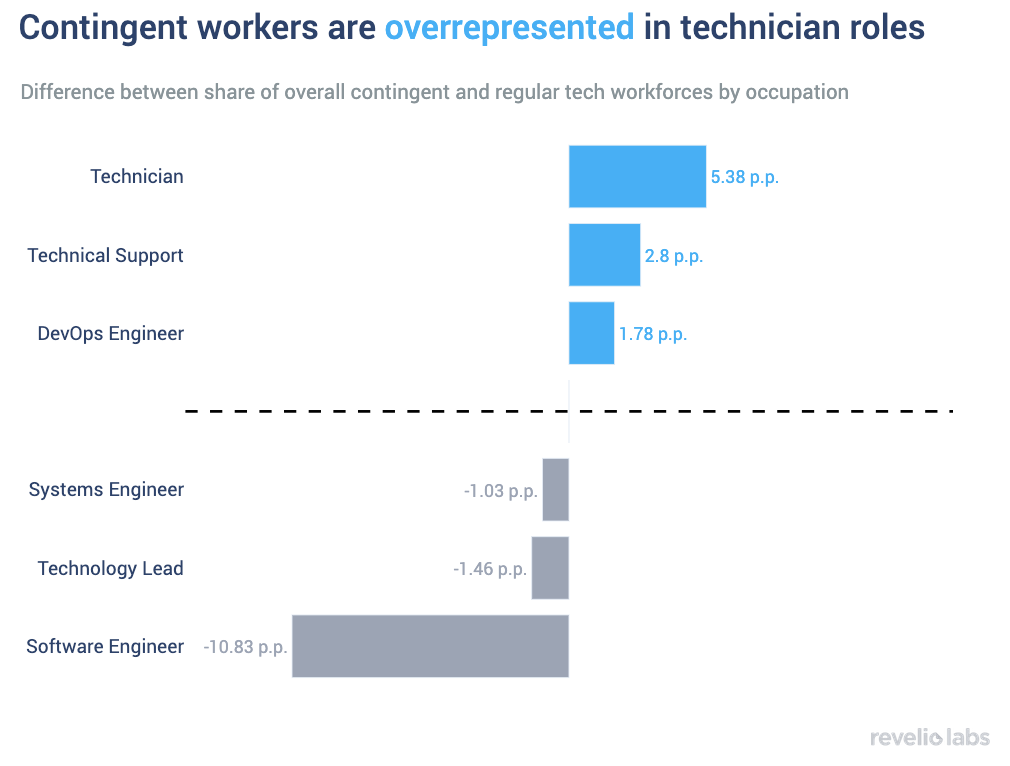
To what extent do compositional differences in observed characteristics account for the unadjusted contingent salary gap? When accounting for factors such as occupation groups, seniority, company, location, prestige, highest degree, ethnicity, gender, and years of experience in our controlled model, the contingent salary gap decreases to 4.5%. In other words, the compositional differences between contingent and regular workers explain 57.9% of the uncontrolled salary gap.

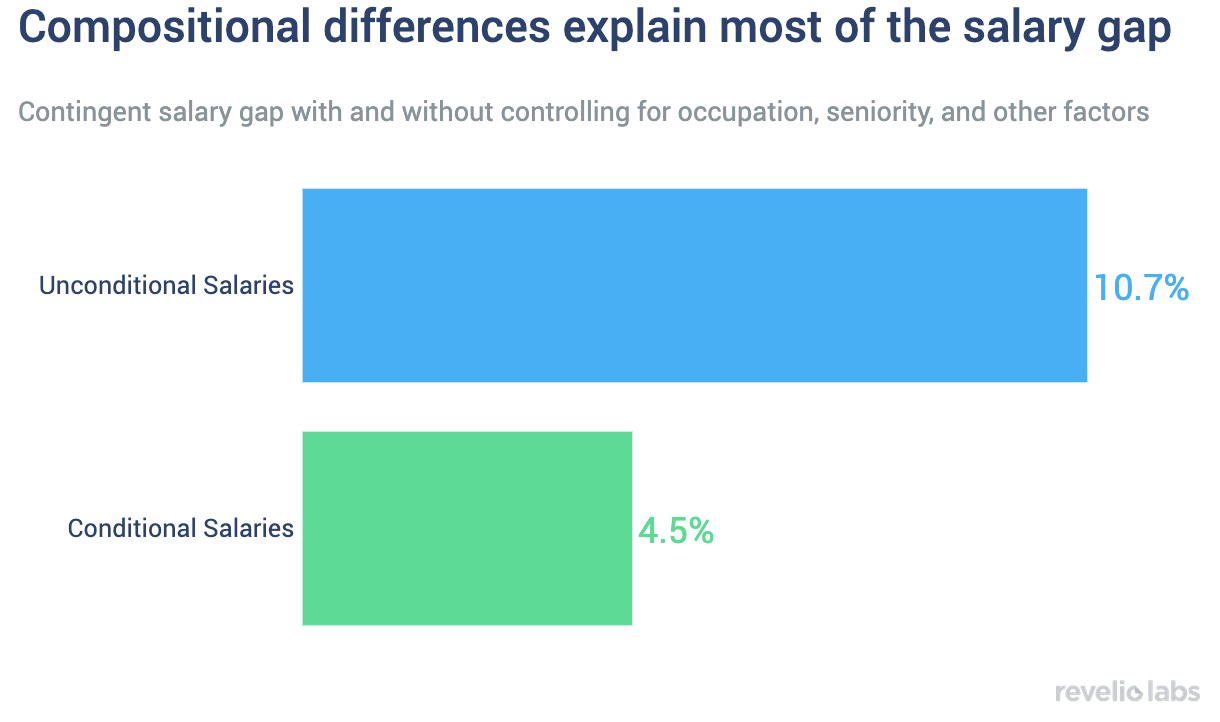
Using the Gelbach decomposition method, we decompose the explained portion of the contingent salary gap and quantify the explanatory power of each factor. Of all the factors, occupational differences emerge as the most influential contributor to the salary gap. If the distribution of occupations were identical between contingent and regular employees, the salary gap would be lower. Specifically, the difference in the occupational distribution accounts for 39% of the observed salary gap.

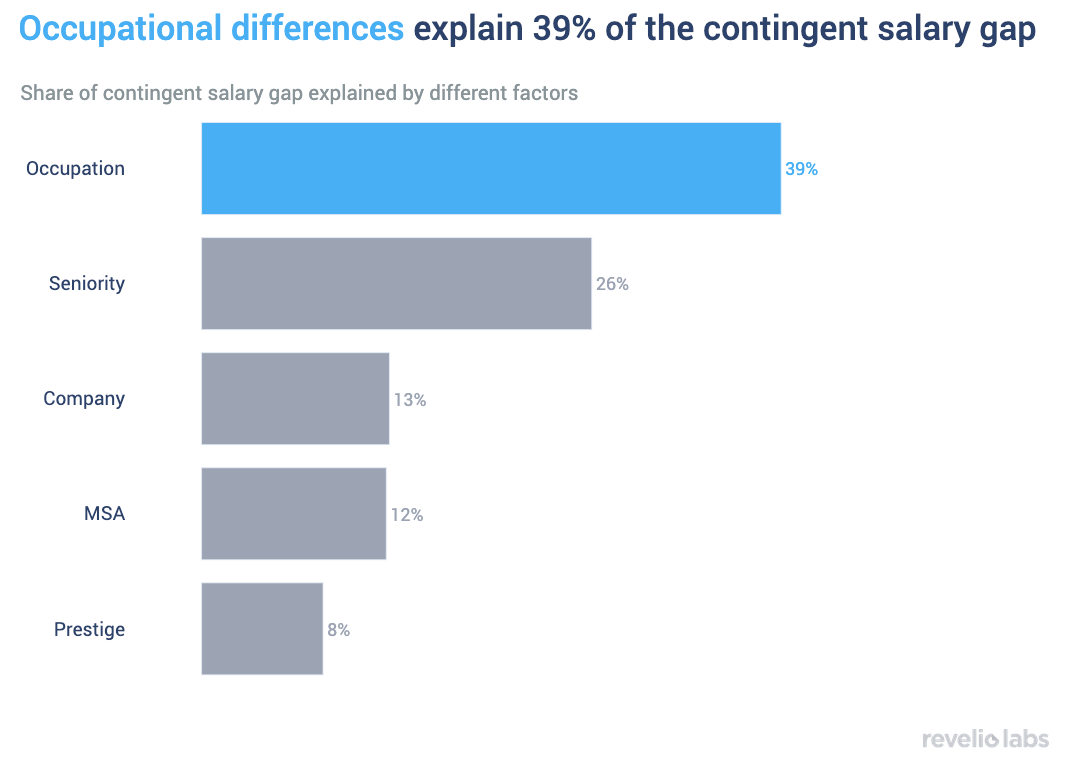
Revelio Labs labor market analytics also show that contingent workers not only earn lower salaries but also exhibit lower levels of job satisfaction in comparison to their regular counterparts. This disparity in sentiment is particularly evident when considering factors such as career advancement prospects and the compensation and benefits package offered by employers. The discrepancy in job satisfaction highlights the importance of addressing the concerns and expectations of contingent workers, as it can impact overall workforce morale and productivity.

